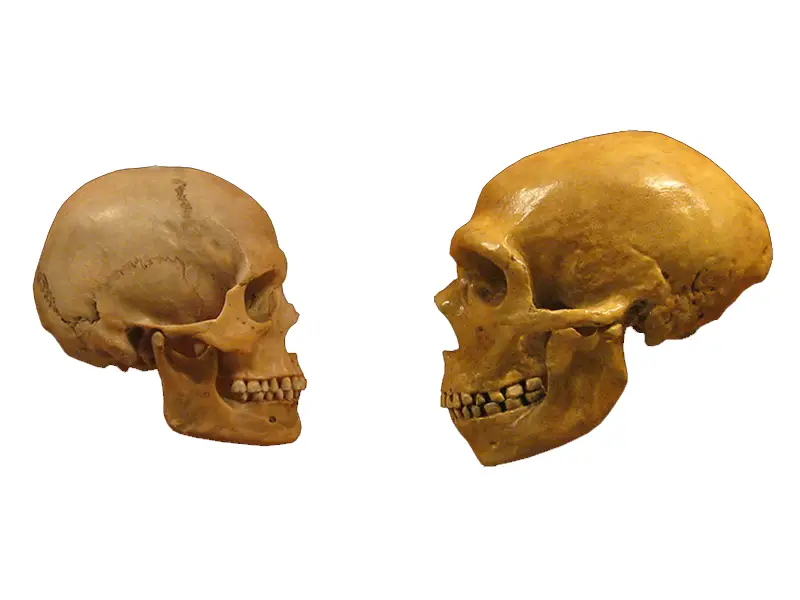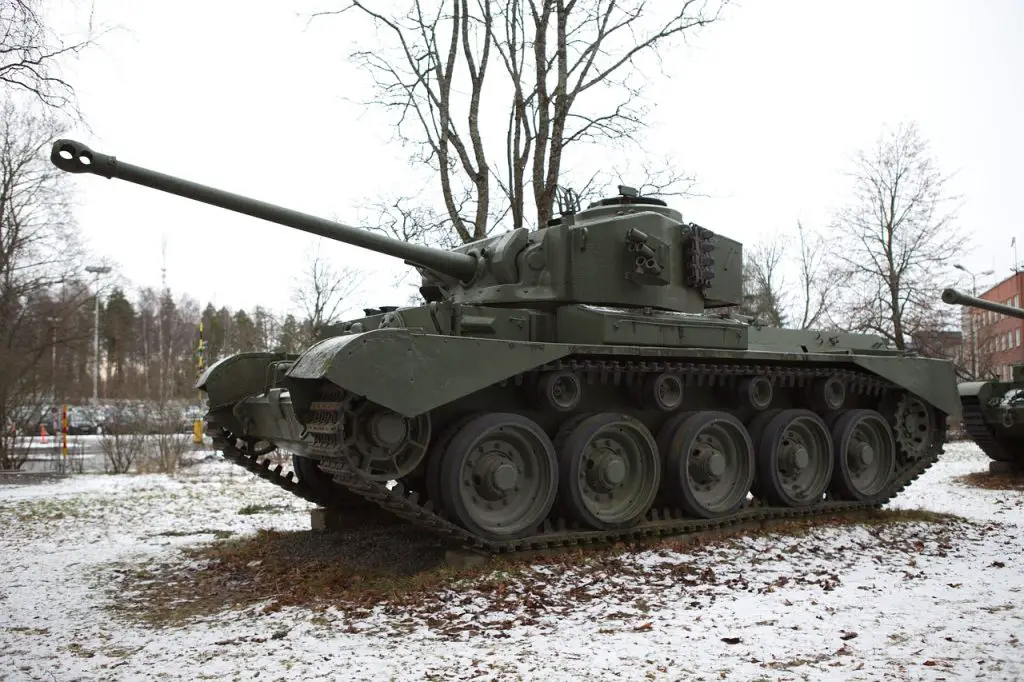 ometimes we talk about war as if it is something that only happened in the past 10,000 years but war was born along with the first ancestors of humanity. Peace is just a social lie, such as perfection, which does not exist. There are always small conflicts around the world that bear violence, but as much as we would compare the hatred of one war be it in modern history, the medieval era, or prehistoric nothing beats the war that most people do not know about.
ometimes we talk about war as if it is something that only happened in the past 10,000 years but war was born along with the first ancestors of humanity. Peace is just a social lie, such as perfection, which does not exist. There are always small conflicts around the world that bear violence, but as much as we would compare the hatred of one war be it in modern history, the medieval era, or prehistoric nothing beats the war that most people do not know about.
When we speak about the Stone Age we think of a somewhat peaceful time where Neanderthals and Homo sapiens were exploring and populating the planet, but this is not true. The stone age is seen as one of the most brutal eras in our existence and this is justified by the 100,000 years war between the Neanderthals and Homo sapiens, who both evolved from the Homo erectus and Homo heidelbergensis.
Another species of humans?
Until I deeply researched this matter I was of the very common belief that Neanderthals are the ancestors of Homo sapiens. Professor Nicholas R. Longrich who is an expert in the field of evolutionary biology from the University of Bath proved this common mistake wrong as, in fact, the Neanderthals were a sister species of Homo sapiens both evolving from Homo erectus almost at the same time.
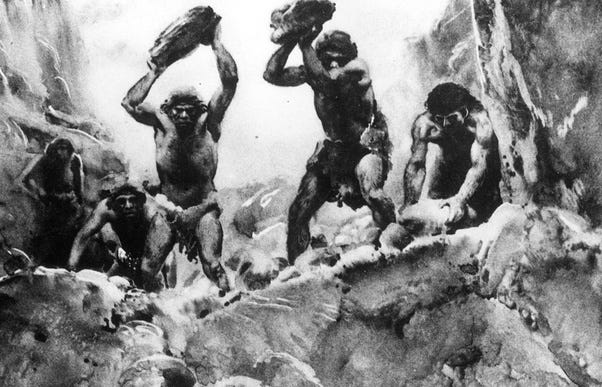
Our vision of the Neanderthals in comparison to Homo sapiens is putting the Neanderthals as the weaker and dumber species. Although from the analysis that has been done so far by experts such as Clive Finlayson we know that Neanderthals were a lot stronger and their intellectual level wasn’t so different from the Homo sapiens.
An important remark is that Homo sapiens were evolving at a quicker pace making them more intelligent.
With this information at hand, we must ask why was this war started or better yet, by whom was this war started?
Who started the 100,000 years war?
As established by author Clive Finlayson in his book Neanderthals and Modern Humans: An Ecological and Evolutionary Perspective the differences in social behavior between the two species weren’t very evident, at least before the war.
The Neanderthals first appeared around between 600,000 to 430,000 years ago on Earth whereas the Homo sapiens species was first seen around 300,000 years ago. The Neanderthals, although having been in existence for a longer period of time, didn’t evolve as much as Homo sapiens did in a shorter period of time in becoming more efficient at collecting food and other vital resources.
The most important resource for any species was food and the main way to get it was through hunting. The Neanderthals were experts at hunting as they would be able to take down any sort of animal, even mammoths, putting them on top of the food chain. Besides a few conflicts between different tribes the Neanderthals as a species never had a competitor until the appearance of Homo sapiens.
Homo sapiens first made their appearance on the African continent whilst the Neanderthals had conquered the Asian and European continent. The Homo sapiens looked a bit different from a physiognomical perspective, but this wasn’t what brought hostility in the first place.
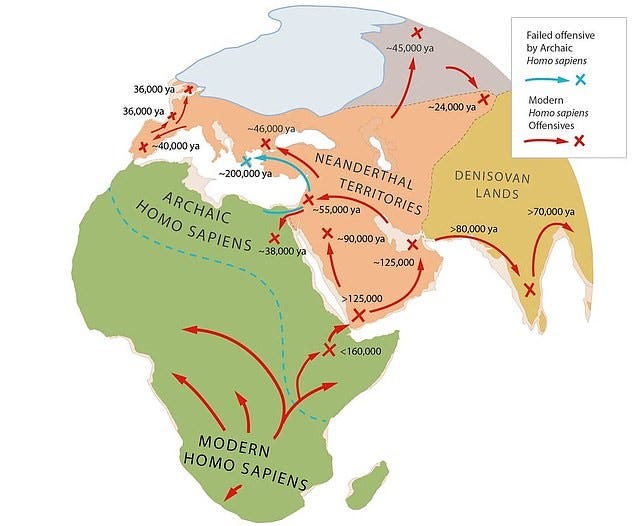
What started the war was the need of sharing food resources. Africa although having a lot to give, was full of predatory animals and sadly our ancestors were not as good at hunting as the Neanderthals. With time the Homo sapiens were forced due to the lack of food and rapid human reproduction to migrate and hunt in the neighboring continents.
The Neanderthals never accepted to share their food, so war was declared. The Neanderthals were a lot stronger (physically) but our ancestors were a lot more innovative and had a higher rate of reproduction. This lead to 100,000 years of ongoing global conflicts between the two species.
It is very difficult to describe the war, not only for its prehistoric age but also for its long period, however, we know that the evolution of the eco-system played an important role within the war.
Why did the Homo-Sapiens win?
The reason why our ancestors won the war isn’t exactly clear as there are too many factors at play as well as too many possibilities to declare a certain reason.
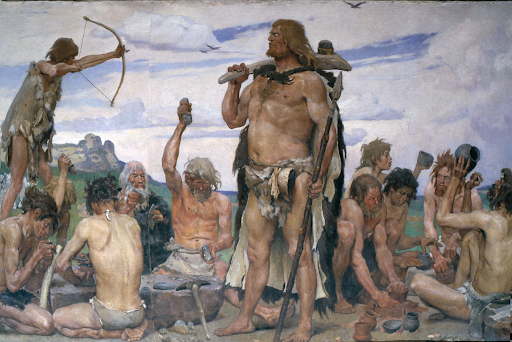
Whilst the Neanderthals had tactical/strategic advantage as well as more muscle, the Homo sapiens started to develop more advanced weapons such as long-bows, sharp rock tip spears, and even sharp rocks as knives. Homo sapiens also probably realized that close-quarter combat wasn’t a good idea when facing such a strong enemy, so they focused more on surprise attacks and ambushes (hit and run tactics).
Besides military tactics and better weaponry came the adaptability of the species. As mentioned, the eco-system changed a lot in 100,000 years bringing different types of weather, natural catastrophes as well as a change within the natural food chain all of which affected the original lifestyle of both species.
However, the Homo sapiens were more adaptable as well as more inclined towards migration, whilst the Neanderthals evolved to focus more on settling in an original place and getting used to the same natural food chain.
We know that the war took around 100,000 years because Homo sapiens only started to migrate out of Africa around 200,000 years ago. That was probably when the Homo sapiens kept evolving at a much higher pace, adapting to new eco-systems presented in Asia and Europe.
What is interesting is the reason why the Neanderthals surrendered in this war. This would technically go against their primitive instinct as described by many paleoanthropologists. Neanderthals only went extinct 40,000 years ago.
So this brings us to the next interesting question.
What made the Neanderthals extinct?
Many people hypothesize that the 100,000 years of war made the Neanderthals extinct. Since the war, the Neanderthals not only lost a lot of their population but were also forced into confinement around various continents around the world.
This did not only meant that it was very difficult for them to adapt and survive in different eco-systems but also that it was more difficult to reproduce. Many paleoanthropologists talk about various hypotheses to their extinction, but Katerina Harvati presents the most pronounced hypothesis based on her research:
- The Homo sapiens were more innovative which allowed them to create better shelter/better clothing in colder periods.
- The Neanderthals never adapted to other sources of food or hunting techniques such as fishing or bird hunting.
- Neanderthals mostly lived in small groups scattered along big planes of land whereas the Homo sapiens lived in larger groups with better social networks that allowed the process of innovative thinking through knowledge-sharing.
- The rate of birth had a major decrease and the rate of mortality a major increase for the Neanderthals. Not forgetting to mention that the life span of Neanderthals was smaller than the one of Homo sapiens.
From this, we can say that the war did play a part in the extinction of Neanderthals as they became more secluded, slowing down their ability to evolve even further. However, the points mentioned above show better reasoning for their extinction.
There is a coherent discussion between historians and paleoanthropologists as to why the two species never co-existed after the war. The best answer could be that it was the Neanderthals who didn’t want to due to their primitive lifestyle and not wanting to adapt and evolve to a new lifestyle.
Sources:
Conard, N. C. & Bolus, M. Radiocarbon dating the late Middle Paleolithic and the Aurignacian of the Swabian Jura. Journal of Human Evolution 55, 886–897 (2008).
Currat, M. & Excoffier, L. Strong reproductive isolation between humans and Neanderthals inferred from observed patterns of introgression. Proceedings of the National Academy of Sciences of the United States of America 108, 15129–15134 (2011).
Finlayson, C. Neanderthals and Modern Humans. Cambridge, UK: Cambridge University Press, 2000.
Ghirotto, S. et al. No evidence of Neandertal admixture in the mitochondrial genomes of early European modern humans and contemporary modern humans. American Journal of Physical Anthropology 146, 242–252 (2011).
Golovanova, L. V. et al. Significance of ecological factors in the Middle to Upper Paleolithic transition. Current Anthropology 51, 655–691 (2010).
Green, R. E. et al. A draft sequence of the Neandertal genome. Science 328, 710–722 (2010).
Harvati, K. “Neanderthals and their contemporaries,” in Handbook of Paleoanthropology, vol. III, eds. W. Henke & I. Tattersall (Heidelberg, Germany: Springer Verlag, 2007) 1717–1748.
Harvati, K., Gunz, P. & Grigorescu, D. Cioclovina (Romania): Morphological affinities of an early modern European. Journal of Human Evolution 53, 732–746 (2007).
Krause, J. et al. The complete mitochondrial DNA genome of an unknown hominin from southern Siberia. Nature 464, 894–897 (2010).
Mellars, P. & French, J. C. Tenfold population increase in western Europe at the Neandertal-to-modern human transition. Science 333, 623–627 (2011).
Pinhasi, R. et al. Revised age of late Neanderthal occupation and the end of the Middle Paleolithic in the northern Caucasus. Proceedings of the National Academy of Sciences of the United States of America 108, 8611–8616 (2011).
Smith, F. H., Janković, I. & Karavanić, I. The assimilation model, modern human origins in Europe, and the extinction of Neandertals. Quaternary International 137, 7–19 (2005).
Smith, T. M. et al. Dental evidence for ontogenetic differences between modern humans and Neanderthals. Proceedings of the National Academy of Sciences of the United States of America 107, 20923–20928 (2010).
Stewart, J. R. The ecology and adaptation of Neanderthals during the non-analogue environment of Oxygen Isotope Stage 3. Quaternary International 137, 35–46 (2005).
Stringer, C. et al. “Climatic stress and the extinction of Neanderthals,” in Neanderthals and Modern Humans in the European Landscape During the Last Glaciation, eds. T. van Andel & W. Davies (Cambridge, UK: McDonald Institute for Archaeological Research, 2003) 233–240.
Avid Writer with invaluable knowledge of Humanity!
Upcoming historian with over 30 million views online.
“You make your own life.”

